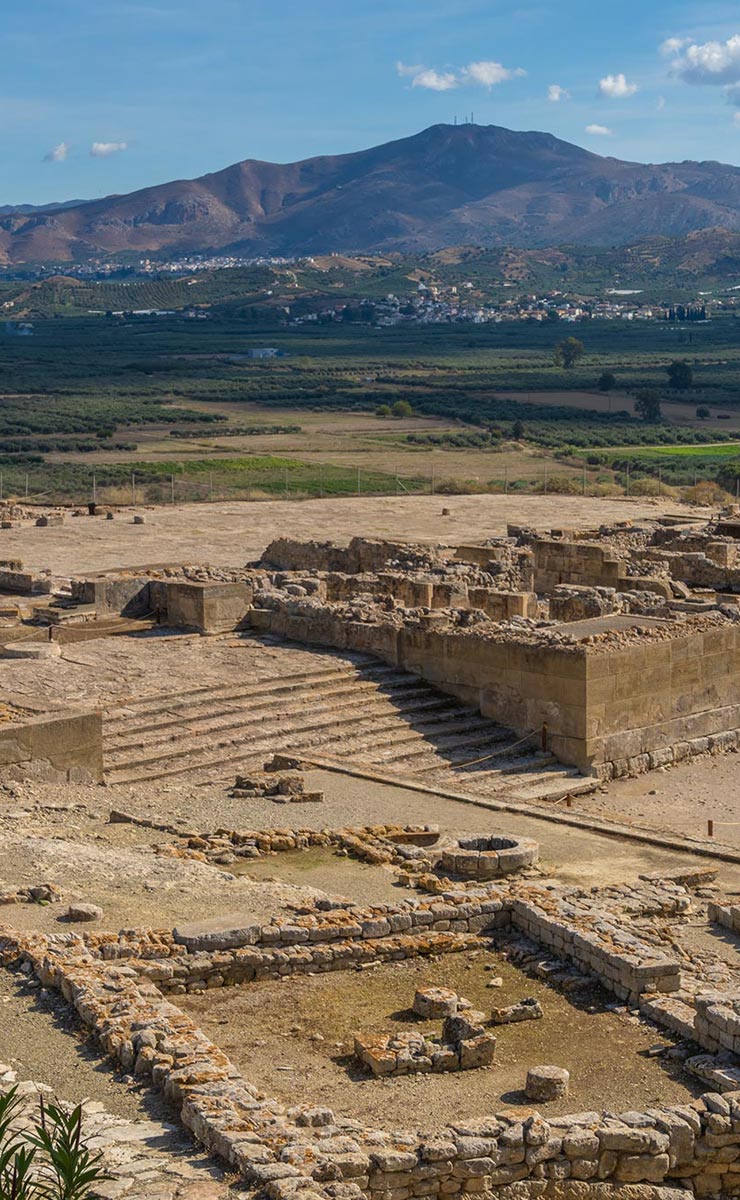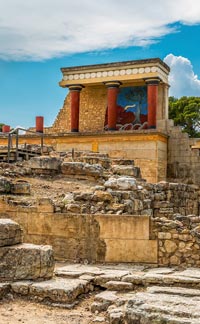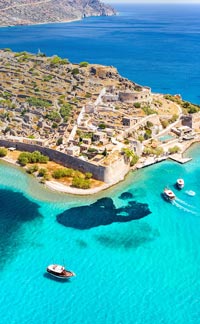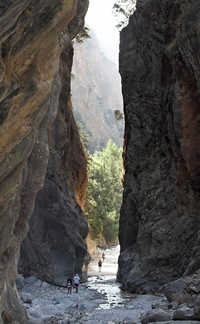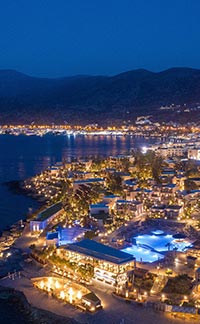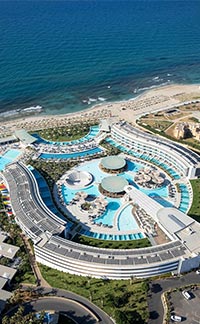The Minoan Palace of Ancient Phaistos is 5 kilometers from the sea, at almost exact center point of the Crete's south coast. But because the south coast of Crete takes a north-south bend at that point in the island, the sea is west of Phaistos and not south. It's about 55 km south of Heraklion. The excavated Palace of Phaistos is the second largest, after Knossos, on Crete.
The palace is beautifully sited on Kastri Hill, overlooking the Mesara Plain, which is, in the 21st century, a rolling, dry countryside full of dusty olive trees and dotted with villages. The Asterousia Mountains to the south, (beyond which is the Libyan Sea), the Lasithi Mountains to the east, and the dramatic bulk of Mt. Psiloritis (Crete's highest point- 2456 m), create a topographical frame around the Mesara Plain. To the west, just beyond the hill of Agia Triada, itself an important Minoan site, the Messara Gulf shines under the bright Cretan sun.
Italian archeologists F. Halbheer and A. Tramelli began investigating the site in 1884, after its location was determined in 1853 by a British admiral named Thomas Spratt, who was surveying settlements and monuments of Crete, and used an account written by the Greek historian/geographer/philosopher Strabo (64 BC-24 AD). Strabo triangulated the city's location using three geographical points of reference:
"Of the three cities that were united under one metropolis by Minos, the third, which was Phaestus, was razed to the ground by the Gortynians; it is sixty stadia distant from Gortyn, twenty from the sea, and forty from the seaport Matalum; and the country is held by those who razed it." Gortyn destroyed Phaistos in the first century BC, but it rebuilt and remained an important population center until 300 AD.
Spratt found a village of 16 houses on top of the hill, but also found the remains of fortifications.
Excavations began in 1900, and continued for 4 years. Further excavations were made by Doro Levi, of the Italian Archeological School of Athens, from 1950-1971.
Historically, this locale has thrived as a center of population from as far back as 4,000 BC, although the first palace built here dates from about 2,000 BC. In mythology, the founder of Phaistos was Minos, and its first king was Radamanthys, Minos's brother. Phaistos was also the birthplace of Epimendis, one of the 7 wise men of the ancient world. It is thought that the Apostle Paul quotes Epimendis in his speech to the Athenians in Acts 17 when he says, speaking of God, that "one of your own poets has said that in him we live, move, and have our being."
Phaistos participated in the Trojan war. It was a very important city-state with extensive territory under its control. It flourished during the Archaic, Classical, and Hellenistic periods (800-100 BC). Homer refers to it as being "well-populated." Greek Historian Diodorus of Sicily writes that Phaistos, Knossos (Heraklion), and Kydonia (Chania), were the 3 main city-states of ancient Crete. There were two ports serving Phaistos, Matala and Kommos.
Although inscriptions have been found on site, they are in the thus far un-translated Linear A script. The name 'Phaistos' was not found here, but in the palace at Knossos. Classical-era (5th-4th centuries BC) coins substantiate the place name, as the obverse has the first 4 or 5 letters of the city's name stamped on them.
The ruins at Phaistos show 2 palaces, an old one dating from 2,000 BC which was destroyed by earthquakes 3 times over 3 centuries, and a new palace built sometime later. Both palaces are made of ashlar blocks (large, dry-stacked cut stones), and, following the topography of the hilltop, form several terraces.
There is a central court, accessed by the very wide, well-preserved Great Staircase. The court is surrounded by a peristyle (a covered, colonnaded walkway), which leads to entrances of various storerooms, living quarters, workshops, and small, sunken rooms known as "lustral basins" which were used for ritual initiation, purification, and possible symbolic descent into Hades.
In addition, there are other areas, including the Tripartite Shrine, the Temple of Rhea, the Queen's Apartment, The King's Megaron (large building), and the Roman Hypostyle Building.
Phaistos is on an exposed hilltop and is best visited during the summer months in the cooler hours of the day, both either early morning or late afternoon.

